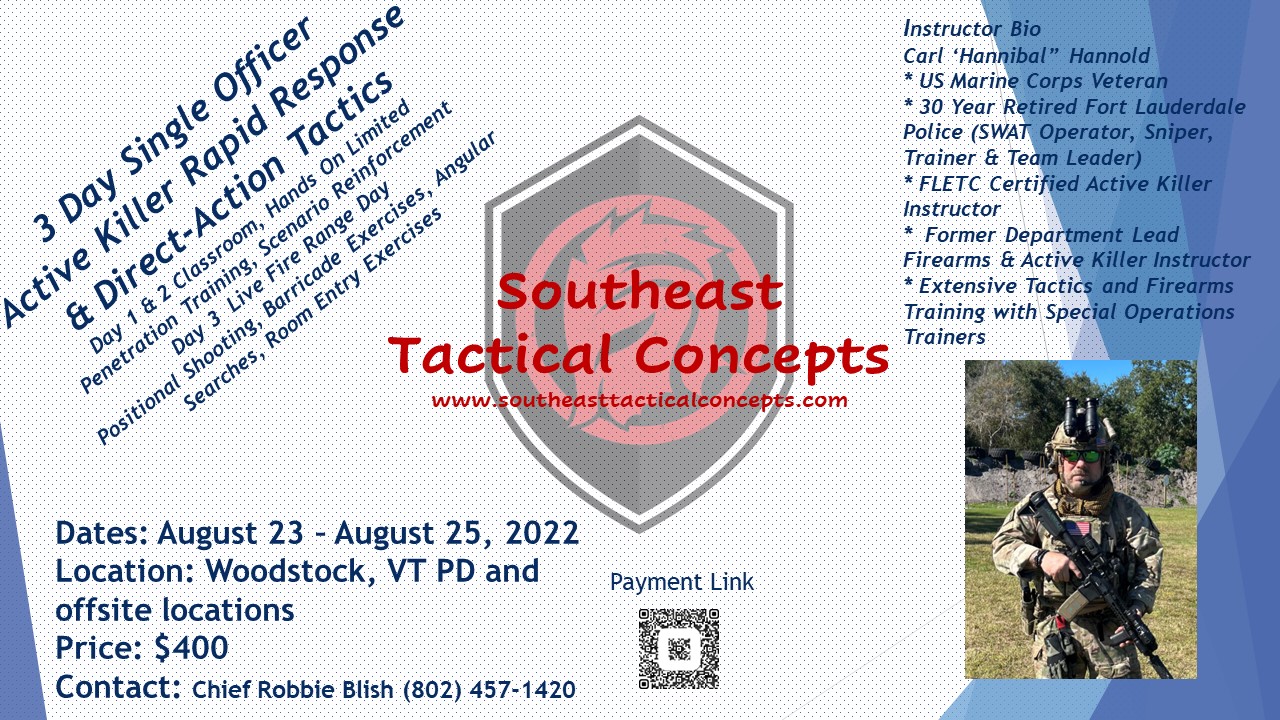In June of 2013, the Federal Department of Education significantly changed the recommended guidelines for how schools should prepare, train, and respond to an active shooter situation.
The Burlington Police Department embraces this standard of care and will be hosting Active Shooter Certification Training (ALICE Training) on June 26 & 27, 2018 at the Burlington High School in Burlington, Vermont. This certification is a two day train-the-trainer class on active shooter response management.
ALICE – Alert, Lockdown, Inform, Counter, Evacuate – is a set of proactive strategies that moves beyond lockdown and increases the chance of survival during a violent intruder event. ALICE is supported by more than 700 law enforcement agencies around the country and complies with the new standard of care recently developed by the Federal Department of Education, the Federal Bureau of Investigation (FBI), Department of Homeland Security
(DHS), and the Federal Emergency Management Agency (FEMA).
ALICE isn’t only for school personnel. Anyone who works with the public can benefit from ALICE training. Attendees range from first responders, business owners, and health professionals.
Please visit http://bit.ly/DoE-K12-Guidelines to learn more about the Department of Education’s guidelines on active shooter situations.
The purpose of advanced ALICE training is to educate local and school-based law enforcement, as well as church, hospital, and workplace administrators and safety professionals about our researched-based, proactive response approach to Violent Intruder events.
The ALICE training program is designed to supplement current "Lock-down" or "Secure-in-Place" procedures used frequently in our public schools and institutions. Tragic historic events have dictated the need of enhanced response options to increase chances of surviving a horrific event.
Program Topic Areas Include:
Policy and Procedures Review
• Instruction on key components of an organized and thoughtful Active Shooter Emergency Operations
Plan with emphasis on Survival Strategies.
• Elicit Active Shooter Readiness Status of their specific institutions, and determine where their
strength and weaknesses lie.
• Distinguish between high and low priority issues when advising policy and procedure
revisions.
Infrastructure Design
• Recognize potential Safety Hazards in building design.
• Design room layouts with priority on Active Shooter defense.
• Understand immediate methods to improve infra-structure hazards.
Proactive Use of Technology
• Current technology resources available to enhance building/occupant safety.
• Current accepted practices utilizing technology in building/occupant safety.
• Discuss proactive uses of technology for building/occupant safety by interfering with intruder's
ability to locate targets.
• Review case studies of past events to determine functionality of technology usage.
Practical Scenario Training
• Conduct practical scenario training in order to experience, visualize, and reinforce course
concepts.
Community Resource Assistance
• Locate and elicit community assistance before, during, and after event.
• Demonstrate ability to locate Community Rally Points.
• Discuss potential Community Partners, and the assistance they can provide.
• How to liaison with other local government agencies.
Mass Evacuations
• Discuss Rapid Mass Evacuation plans.
• Discuss tactical advantages associated with maintaining distance vs. securing-in- place and/or
barricading.
• Identify non-conventional methods of mobilizing large numbers of people.
Lesson Preparation
• Participants will be required to build and present a 10 minute presentation to demonstrate
material comprehension.
• Review and Exam

